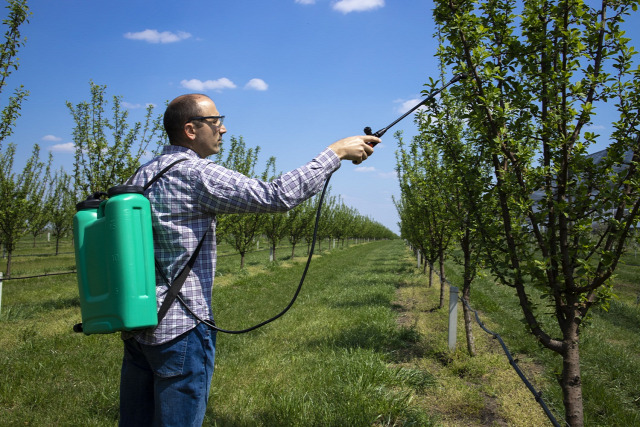
In an era characterized by sustainability and environmental consciousness, the agricultural industry is increasingly turning to bio-based solutions to address pest management and soil fertility challenges. Biopesticides and Biofertilizers, derived from natural sources such as plants, microbes, and organic matter, offer eco-friendly alternatives to conventional chemical inputs. As the demand for sustainable agricultural practices grows, the global market for biopesticides and biofertilizers is experiencing significant expansion and innovation.
Rise of Bio-Based Agriculture
Biopesticides and Biofertilizers represent a paradigm shift in agricultural practices, moving away from reliance on synthetic chemicals towards harnessing the power of nature's own mechanisms for pest control and soil enhancement. Biopesticides utilize naturally occurring substances such as botanical extracts, microbial agents, and biochemicals to target pests and diseases, while biofertilizers leverage beneficial microorganisms such as nitrogen-fixing bacteria and mycorrhizal fungi to improve soil health and plant nutrition.
Global Market Overview
The Global Biopesticides and Biofertilizers Market encompasses a wide range of products derived from naturally occurring substances such as microorganisms, plant extracts, and beneficial insects. Biopesticides are used to control pests, diseases, and weeds in crops, while biofertilizers enhance soil fertility and plant nutrition through the introduction of beneficial microorganisms. As awareness of the environmental and health risks associated with chemical pesticides and fertilizers grows, the demand for bio-based alternatives is on the rise.
According to the BIS Research Report, the Biopesticides and Biofertilizers Market was valued at $6,906.7 million in 2023, and it is expected to grow at a CAGR of 12.52% and reach $22,463.3 million by 2033 during the forecast period 2023-2033.
Key Market Dynamics
Several factors are driving the growth of the biopesticides and biofertilizers market:
Environmental Concerns and Regulatory Pressures:
- Growing awareness of adverse environmental impacts.
- Stricter regulations on chemical pesticides and fertilizers.
- Consumer demand for safer, sustainable alternatives.
- Biopesticides and biofertilizers minimize chemical residues.
- Reduce soil and water contamination, promote biodiversity.
Demand for Organic and Sustainable Agriculture:
- Rising consumer preference for organic food products.
- Demand for inputs complying with organic certification.
- Biopesticides and biofertilizers essential in organic farming.
- Provide effective pest management and soil fertility.
- Maintain organic integrity of farming systems.
Technological Advancements and Product Innovation:
- Advances in biotechnology, microbiology, and fermentation.
- Development of more effective biopesticides and biofertilizers.
- Improved efficacy, shelf life, and compatibility.
- Drive adoption among farmers worldwide.
- Enhance modern agricultural practices.
Action Required: Don't lose the opportunity to download our FREE Sample (PDF) Report on Biopesticides and Biofertilizers Market Research!
Global Biopesticides and Biofertilizers Industry Segmentation
Segmentation by Crop Type:
- Cereals and Grains
- Oilseeds and Pulses
- Fruits and Vegetables
- Others
Segmentation by Product Type:
- Biofertilizers
• Nitrogen Fixing
• Phosphate Stabilizers
• Others
- Biopesticides
• Bioinsecticides
• Biofungicides
• Bioherbicides
• Others
Segmentation by Source:
- Microorganism
• Bacteria
• Fungi
• Others
- Plant-Incorporated Protectants
- Biochemical
Global Regional Outlook
North America led the global market of biopesticides and biofertilizers in 2022 owing to a combination of factors that underscore the region's commitment to sustainable agriculture. Stringent regulations on chemical pesticide and fertilizer usage in the U.S. and Canada have driven farmers to adopt eco-friendly alternatives, contributing to the market's growth.
Additionally, heightened awareness among North American consumers about the environmental and health impacts of synthetic inputs has led to an increased demand for organic produce, compelling farmers to embrace biopesticides and biofertilizers. Government initiatives and support for sustainable agriculture practices, such as the Organic Certification Program in the U.S., have incentivized the adoption of bio-based solutions.
Market Challenges and Opportunities
While the prospects for the biopesticides and biofertilizers market are promising, challenges such as limited efficacy against certain pests and diseases, variable product performance under different environmental conditions, and higher production costs compared to chemical inputs remain. However, ongoing research and development efforts, technological innovations, and collaborations between industry stakeholders offer opportunities for market expansion and product advancement. By leveraging biotechnological tools, optimizing formulation techniques, and educating farmers about the benefits of bio-based agriculture, the biopesticides and biofertilizers market can continue to grow and contribute to sustainable food production worldwide.
Also Read: Global Biorational Pesticides Market
Conclusion
The Global Biopesticides and Biofertilizers Industry represents a sustainable solution to the environmental and health challenges associated with conventional chemical inputs in agriculture. As farmers increasingly prioritize sustainability and consumer demand for organic products rises, the market for bio-based alternatives is poised for significant growth. By harnessing the power of nature and embracing innovative solutions, the biopesticides and biofertilizers market can nurture agriculture, protect the environment, and ensure a healthier future for generations to come.

